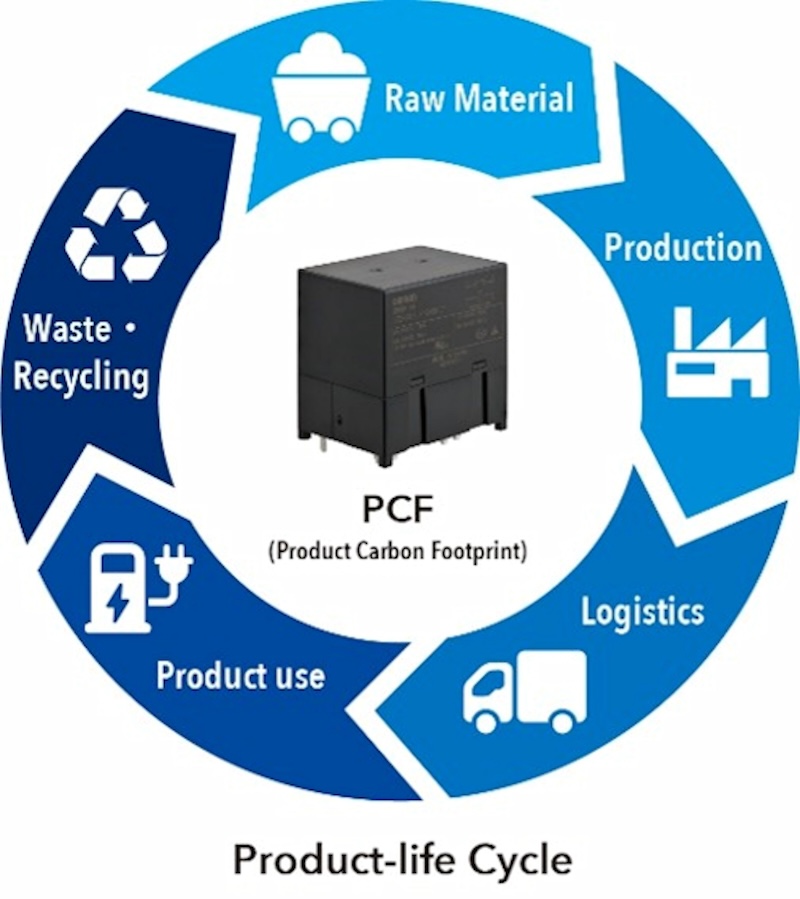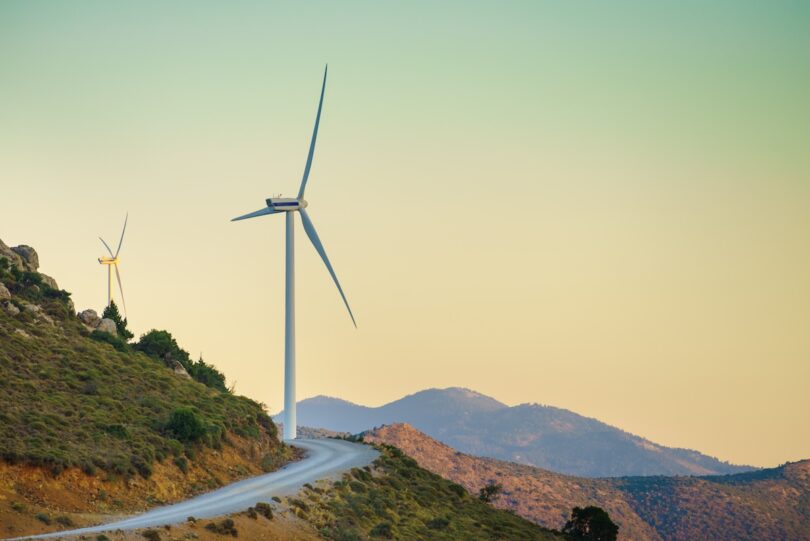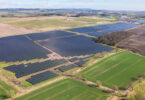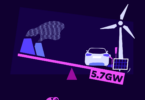OMRON Corporation (HQ: Shimogyo-Ku, Kyoto. President and CEO: Junta Tsujinaga) announced today that it will begin providing carbon footprint data of products (PCF*2) calculations based on global standards*1 for high-capacity power relays for energy storage systems and other new equipment to customers from May 2024. Next, the company will promote visualization of GHG emissions*3 throughout the supply chain in the electrical equipment industry and contribute to the acceleration of society’s decarbonization globally.

In order to realize a decarbonized society, society as a whole is required to reduce GHG emissions, and countries around the world are strengthening regulations regarding PCF in order to promote the reduction of GHG emissions, especially in the manufacturing industry, where energy consumption is high. As a result, as a trend toward green procurement in the supply chain, the use of PCF disclosure as a policy for selecting suppliers has been increasing, and it is becoming necessary for companies to implement PCF calculations.
To strengthen the connectivity between non-financial and financial environmental impact, OMRON has introduced an “Environmental Evaluation Framework” and is working to design and develop products that take the environment into consideration. In line with this system, OMRON has established its own calculation guidelines for PCF based on global standards. In the electronic components business, PCF is calculated based on the guidelines for the G9KB series of high-capacity power relays for new energy devices such as power conditioners and storage systems and will provide calculation data upon customer request from May 2024. The PCF for this product series is calculated based on ISO 14067*4 and has been certified by a third party. OMRON will gradually provide data on a wide range of high-capacity power relays. In addition, the company will accelerate the deployment of PCF calculation models in conjunction with the demonstration experiment to determine GHG emissions in the supply chain (announced on January 29, 2024), which began in March 2024.
Main specifications of the G9KB series high-capacity relays
The G9KB-E is a new product that will go on general sale on June 1st, 2024.
The G9KB-E is a high-capacity version of the G9KB series, which has the same size and weight as the G9KB reference model, but with a maximum opening and closing voltage of 800 V DC and a maximum current of 100 A. The rated value of 800 V DC 50 A and 600 V DC 100 A is especially suitable for 15~40 kW class battery related applications such as power storage systems and EV charger/V2X.
| Item | G9KB | (NEW)G9KB-E |
| Contact Configuration | 1a | 〃 |
| Contact Gap | >3.6mm | 〃 |
| Contact resistance (initial value) | ≦5mΩ | 〃 |
| Max Switching
Voltage |
600VDC | 800VDC |
| Max Switching
Current |
50A | 100A |
| Rated load | 600VDC 50A | 800VDC 50A
600VDC 100A etc. |
| Electrical durability | 600VDC 50A 2,000 operations | 800VDC 18A 6,000 operations
800VDC 50A 10 operations 600VDC 100A 100 operations |
| Main Contact Polarity | None | 〃 |
| Mechanical Service Life | 1,000,000 times (Switching frequency: 10,800 times/h) | 〃 |
| Coil Voltage | DC12V / DC24V | 〃 |
| Coil Power Consumption | Approx. 2.8 W (Hold voltage: At 45%: 0.57W) | 〃 |
| Operating Temperature | -40℃ ~ +85℃ | 〃 |
| Size | L 50.5 x W 37.0 x H 50.5 mm | 〃 |
| Terminal | PCB | 〃 |
| Structure | Fluxtite | 〃 |
| Safety Standard | UL/C-UL、EN/IEC、CQC | 〃 |
For details on the G9KB series of high-capacity relays, refer to the following page:
G9KB | PCB Power Relays | OMRON Device & Module Solutions – Europe
Main Applications of the G9KB Series High-Capacity Relays
The lineup of High-Capacity Relays
The smarter E Europe Exhibition, Stand B6.680, June 19-21, 2024
Omron will be demonstrating an extensive range of products that support efficiency and reduction of energy losses for EV charging, electricity storage systems (ESS) and solar applications, including the new high-capacity G9KB-E relay. For more information, please visit: https://www.thesmartere.de/
*1 Global standards: ISO 14067, PACT Pathfinder Framework, etc.
*2 PCF: Abbreviation for Carbon Footprint of Product. Calculates and displays the amount of greenhouse gas emissions (=GHG emissions) per product in terms of CO2 over the life cycle from raw material procurement to disposal and recycling.
*3 GHG emissions: Abbreviation of greenhouse gas emissions
*4 ISO 14067: One of the standards for climate change that defines requirements and guidelines for quantifying the carbon footprint of products
About OMRON’s Environmental Initiatives for Sustainability
OMRON believes that the creation of a sustainable society and conservation of the environment are essential to achieve our Corporate Principles, particularly our commitment to contributing to the creation of a better society. Our company is working proactively on issues that affect our society, with a strong focus on climate change and resource recycling. We have positioned the reduction of greenhouse gas emissions, the transition to a circular economy, and coexistence with nature as key challenges for our environmental initiatives, and we will contribute to the creation of a sustainable society and enhance our corporate value by ensuring the effectiveness of our initiatives as well as a robust system for their implementation.
Details of our sustainability initiatives can be found at the following URL:
・Sustainability Initiatives: https://sustainability.omron.com/en/
・Evaluation from Outside Parties: https://sustainability.omron.com/en/evaluation/







